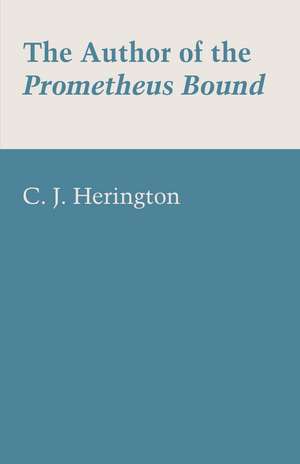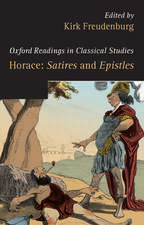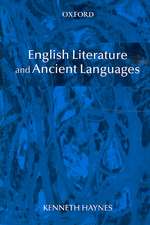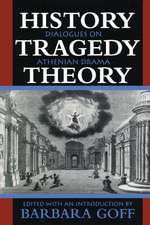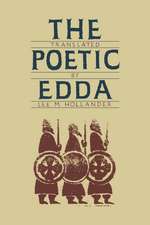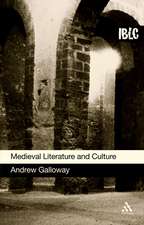The Author of the Prometheus Bound
Autor C. J. Heringtonen Limba Engleză Paperback – 31 dec 1969
This monograph attempts a systematic answer to these questions. It first surveys the general conditions of the authenticity problem as they appeared after the redating of Aeschylus’ Supplices. Next, it catalogues in detail the stylistic, metrical, and thematic features of the Prometheus that have been supposed to tell against Aeschylus’ authorship. Finally, it suggests that these phenomena will not make sense on the assumption that the play was written by anyone other than Aeschylus, and that the date of composition must fall after the Oresteia, in the last two years of Aeschylus’ life. Given this definite context and date, many of the apparent problems of the Prometheus Bound either fall away or at least can be more precisely formulated by reference to the other extant tragedies of Aeschylus’ latest phase.
Preț: 150.41 lei
Nou
Puncte Express: 226
Preț estimativ în valută:
28.79€ • 30.00$ • 23.96£
28.79€ • 30.00$ • 23.96£
Carte tipărită la comandă
Livrare economică 06-20 ianuarie 25
Preluare comenzi: 021 569.72.76
Specificații
ISBN-13: 9781477304204
ISBN-10: 1477304207
Pagini: 136
Dimensiuni: 140 x 216 x 15 mm
Greutate: 0.18 kg
Editura: University of Texas Press
Colecția University of Texas Press
ISBN-10: 1477304207
Pagini: 136
Dimensiuni: 140 x 216 x 15 mm
Greutate: 0.18 kg
Editura: University of Texas Press
Colecția University of Texas Press
Notă biografică
C. J. Herington (1924–1997) taught classics at several universities.
Cuprins
- Chapter I. General Considerations: Criteria
- Chapter II. First Criterion: Minor Stylistic and Metrical Phenomena
- 1. Unparalleled in Dramatic Poetry
- a) Choric quatrains
- b) Formal pattern in line arrangement
- c) Unparalleled frequency of word and phrase repetition
- 2. Unparalleled in Tragedy
- a) Initial rho preceded by a short vowel not constituting a long syllable
- b) Interlinear hiatus after trimeters without stop
- 3. Unparalleled in the Extant Plays and Fragments of Aeschylus
- a) Uses of the definite article
- b) High proportion of resultative perfects
- c) High proportion of first-foot anapaests in the trimeters
- d) High proportion of enjambment
- e) 1:2 stichomythia
- f) Metron overlap in anapaestic dimeters
- g) Dactylo-epitrite meter
- 4. Confined to (or Predominant in) PV, Su, Oresteia
- a) Lieblingswörter
- b) “Ellipse” of the first and second persons of εἰμí
- c) δεî
- d) πέπρωται
- e) Address formulae
- f) ὰπαλλαγἠ πόνων
- g) εύμενἠς βία
- h) Metrical statistics
- 5. Particles in the Prometheus
- 1. Unparalleled in Dramatic Poetry
- Chapter III. Second Criterion: Cosmic View and Trilogic Composition
- 1. Fundamental Difference in Cosmic Background between the Two Groups, Pe-Se and Su-Oresteia-PV
- 2. Trilogic Structure
- 3. Influence of Old Comedy
- 4. Appearances of the Gods on Stage
- 5. Zeus
- 6. Tormented Wanderer
- 7. Conclusion
- Chapter IV. Miscellaneous Items Perhaps Bearing on Date or Authenticity
- 1. The Third Speaking Part
- 2. Dramatic Character of the Prologue (1–87)
- 3. Two Allegedly Sophoclean Features
- a) The Hero
- b) Pity and Fear
- 4. The Monodies
- 5. Pre-Socratic Echoes in Sutriology, Oresteia, and
- 6. Sophistic/Rhetorical Echoes in the Prometheus
- Chapter V. Résumé of the Results of Chapters II, III, and IV
- Chapter VI. Some Conclusions
- Appendix A. The Components of the Prometheia
- Appendix B. External Grounds for Dating the Prometheus
- Bibliography
Descriere
An examination of questions surrounding the ancient Greek play Prometheus Bound, including whether Aeschylus was actually the author.
